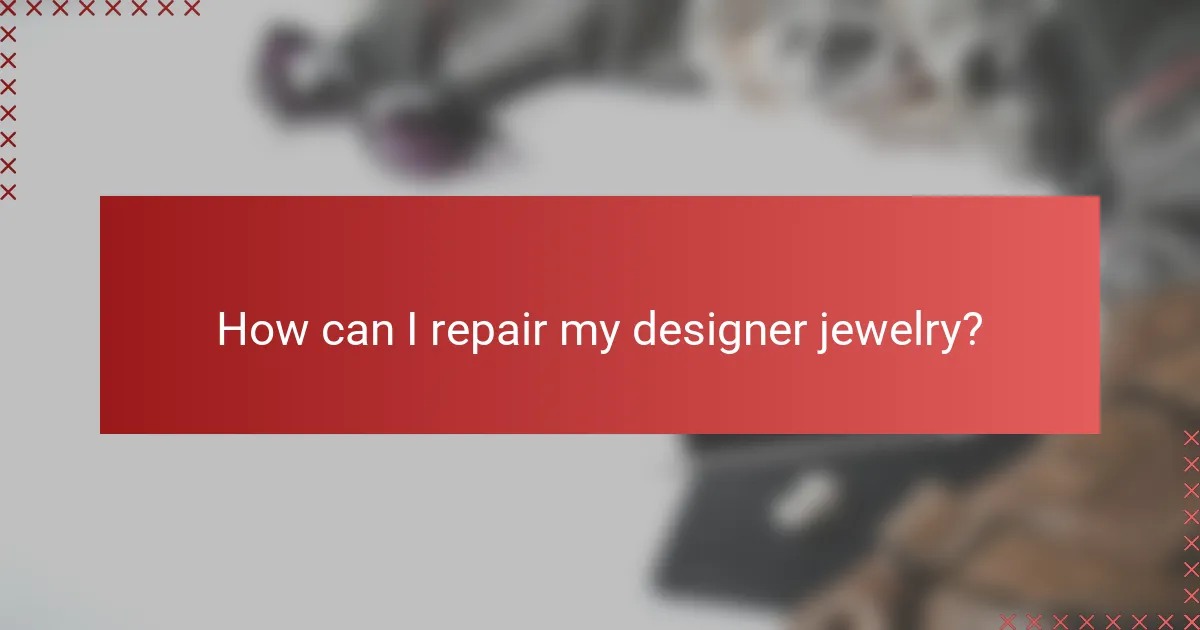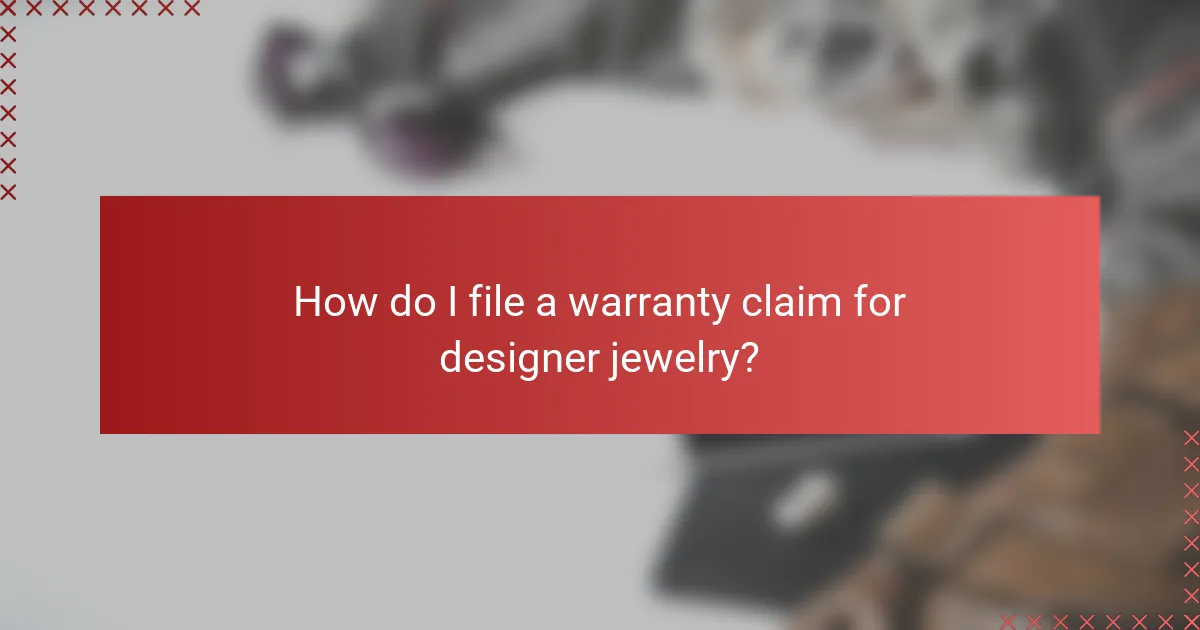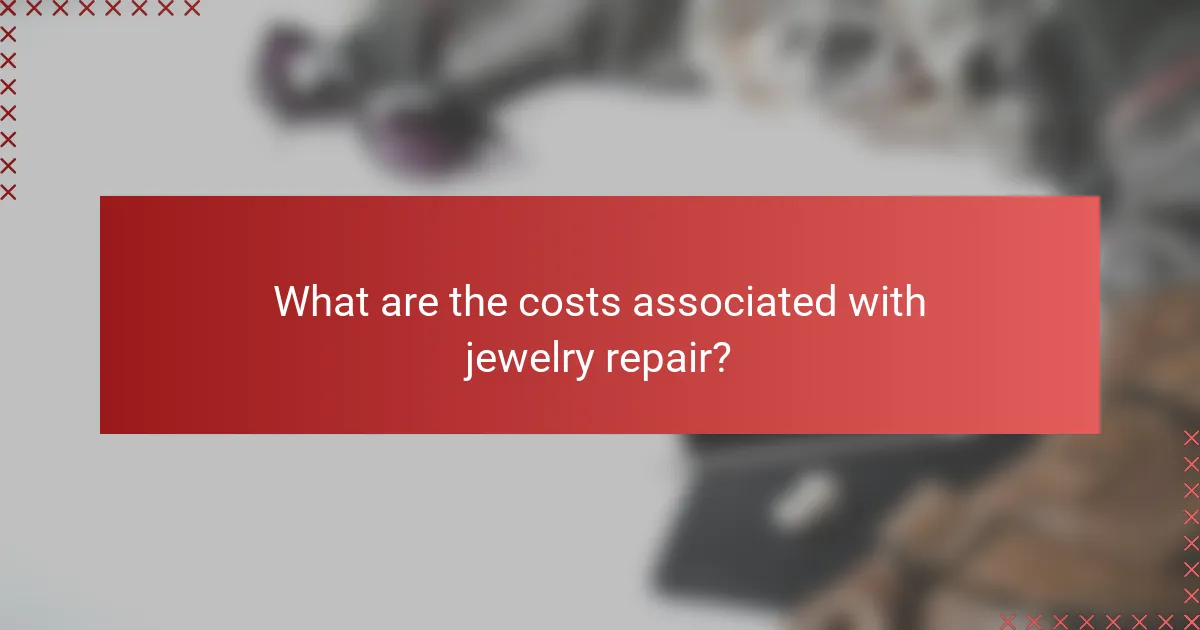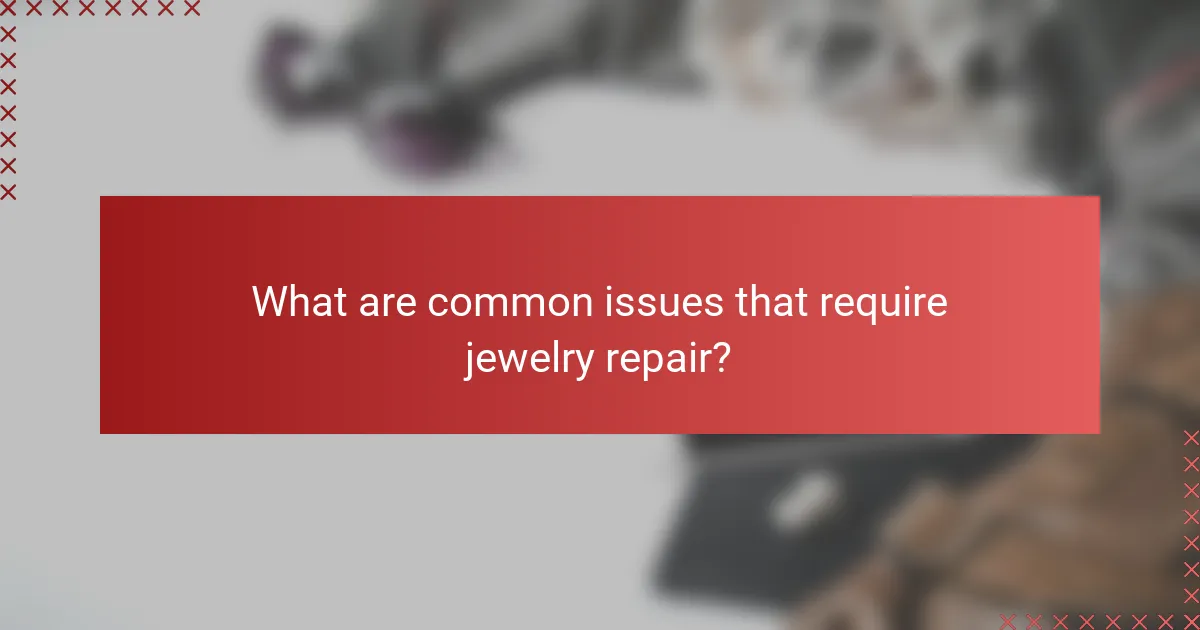When investing in designer jewelry, it’s crucial to understand the warranty options available, as they protect against defects and damage. Additionally, knowing your repair options—whether through authorized services, in-house solutions, or DIY kits—can help maintain the beauty and integrity of your pieces. By considering the coverage and duration of warranties, you can make informed decisions that safeguard your investment.

What warranty options are available for designer jewelry?
Designer jewelry typically comes with various warranty options that protect against defects and damage. Understanding these warranties can help you make informed decisions about your purchase and ensure your investment is safeguarded.
Manufacturer warranty
A manufacturer warranty is provided directly by the jewelry brand and usually covers defects in materials and workmanship for a specified period, often ranging from one to five years. This warranty may include repairs, replacements, or even refunds depending on the issue.
When considering a manufacturer warranty, check the specific terms and conditions, as some brands may require proof of purchase and regular maintenance to keep the warranty valid. It’s also wise to inquire about what types of damage are excluded, such as wear and tear or accidental damage.
Retailer warranty
Retailer warranties are offered by the store where you purchased the jewelry and can vary significantly in coverage and duration. These warranties may cover repairs for a shorter period, often one year, and can include services like cleaning and minor repairs.
Before relying on a retailer warranty, review the details carefully. Some retailers may have strict return policies or conditions that could limit your ability to claim repairs. It’s beneficial to ask about any additional costs associated with using the warranty.
Extended warranty plans
Extended warranty plans are optional services that provide coverage beyond the standard manufacturer or retailer warranties. These plans can last several years and may cover a wider range of issues, including accidental damage, for a fee that varies based on the jewelry’s value.
When considering an extended warranty, evaluate the cost against potential repair expenses. It may be worthwhile if you own high-value pieces or if you frequently wear your jewelry. Always read the fine print to understand what is included and any limitations that may apply.

How can I repair my designer jewelry?
Repairing designer jewelry can often be done through authorized services, in-house options, or even DIY kits, depending on the type of damage and your comfort level with repairs. It’s essential to assess the condition of your piece and choose the most suitable method for restoration.
Authorized repair services
Authorized repair services are typically offered by the brand or retailer where you purchased the jewelry. These services ensure that repairs are conducted by trained professionals who use genuine parts, maintaining the integrity and value of your piece.
When considering authorized services, check if they provide warranties on repairs. This can offer peace of mind, knowing that any future issues may be covered. Costs can vary widely, often ranging from low tens to hundreds of dollars, depending on the complexity of the repair.
In-house repair options
Many jewelry stores offer in-house repair options, which can be more convenient and sometimes quicker than sending items to authorized services. In-house repairs may include resizing, stone replacement, or fixing clasps.
Before opting for in-house repairs, inquire about the jeweler’s experience and the materials they use. While these services can be less expensive than authorized repairs, ensure that they maintain quality standards to avoid compromising your jewelry’s value.
DIY repair kits
DIY repair kits can be a cost-effective solution for minor issues like loose stones or broken clasps. These kits often include tools and materials needed for simple repairs, allowing you to fix your jewelry at home.
However, be cautious when using DIY kits. If you’re unsure about the repair process, it may be better to consult a professional to avoid causing further damage. Always follow the instructions carefully and consider the value of the piece before attempting repairs yourself.

What should I consider before choosing a warranty?
Before selecting a warranty for designer jewelry, consider the coverage, duration, and any exclusions that may apply. Understanding these factors will help you make an informed decision and ensure your investment is protected.
Coverage details
Coverage details specify what repairs or replacements are included under the warranty. Common aspects covered may include manufacturing defects, stone replacement, and general wear and tear. It’s essential to read the fine print to know exactly what is protected and under what conditions.
For example, some warranties might cover only the metal parts of a piece, while others may include gemstones. Knowing these specifics can help you avoid unexpected costs later.
Duration of warranty
The duration of the warranty indicates how long the coverage remains valid after purchase. Most designer jewelry warranties last from one to several years, depending on the brand and type of jewelry. A longer warranty can provide peace of mind, especially for high-value items.
When assessing duration, consider how often you wear the piece and the likelihood of damage. If you wear it daily, a longer warranty may be beneficial.
Exclusions and limitations
Exclusions and limitations outline what is not covered by the warranty. Common exclusions include damage from accidents, neglect, or unauthorized repairs. Understanding these limitations is crucial to avoid surprises when seeking repairs.
For instance, if a warranty excludes accidental damage, you may want to consider additional insurance for comprehensive coverage. Always clarify any ambiguous terms with the retailer before finalizing your purchase.

How do I file a warranty claim for designer jewelry?
Filing a warranty claim for designer jewelry typically involves contacting the retailer or manufacturer to initiate the process. Most brands have specific procedures to follow, which may include providing documentation and details about the issue with the jewelry.
Contacting customer service
The first step in filing a warranty claim is to reach out to the customer service department of the brand or retailer. This can usually be done via phone, email, or through their website. Be prepared to explain the issue clearly and provide any relevant details about your purchase.
Many brands have dedicated warranty support lines or online forms specifically for claims. Check the brand’s official website for the most efficient contact method.
Required documentation
To process your warranty claim, you will typically need to provide proof of purchase, such as a receipt or order confirmation. Additionally, some brands may require photographs of the jewelry showing the defect or damage.
It’s advisable to keep all original packaging and documentation until you are certain that your jewelry is free from defects, as this can simplify the claims process.
Claim processing time
The processing time for warranty claims can vary significantly depending on the brand and the nature of the issue. Generally, you can expect a response within a few days to a couple of weeks.
After your claim is approved, repairs or replacements may take additional time, often ranging from a few weeks to several months, especially if the item needs to be sent back to the manufacturer. Always inquire about the expected timeline when you file your claim.

What are the costs associated with jewelry repair?
The costs associated with jewelry repair can vary widely based on the type of repair needed, the materials involved, and the service provider. Generally, you can expect to pay for repair service fees, shipping costs, and possibly insurance coverage if applicable.
Repair service fees
Repair service fees typically range from low tens to several hundred dollars, depending on the complexity of the repair. Simple tasks like resizing a ring may cost around $20 to $50, while more intricate repairs, such as stone replacement or restoration, can exceed $100. Always request a detailed estimate before proceeding with any repairs.
Some jewelers may charge a flat fee for specific services, while others might bill hourly. It’s advisable to compare quotes from multiple jewelers to ensure you receive a fair price for the repair work.
Shipping costs
If you need to send your jewelry for repair, shipping costs can add to your total expenses. Standard shipping rates typically range from $5 to $20, depending on the carrier and service level selected. For valuable items, consider using insured shipping options, which may cost more but provide peace of mind.
When shipping jewelry, always use secure packaging and consider tracking services to monitor your shipment. Some repair services may offer free shipping for returns, so inquire about this option when obtaining estimates.
Insurance coverage
Insurance coverage for jewelry repairs can be an essential factor to consider, especially for high-value pieces. Many homeowners or renters insurance policies may cover repair costs, but it’s crucial to verify the specifics with your insurer. Some policies may have limits or require a separate rider for valuable items.
Before sending your jewelry for repair, check if the repair service offers any warranty or guarantee that could protect you against loss or damage during the repair process. This can provide additional security and help mitigate potential costs associated with repairs.

What are common issues that require jewelry repair?
Common issues that necessitate jewelry repair include broken clasps and loose stones. These problems can affect the functionality and appearance of your jewelry, making timely repairs essential to maintain their value and usability.
Broken clasps
Broken clasps are a frequent issue, especially in necklaces and bracelets. A malfunctioning clasp can lead to the loss of the entire piece, so it’s crucial to address this promptly. Repairing a clasp typically involves either replacing it with a new one or fixing the existing mechanism, depending on the damage.
When considering clasp repairs, evaluate the type of clasp used. Lobster clasps and toggle clasps are common, and their repair processes may differ. Always consult with a professional jeweler to determine the best course of action, as they can provide insights on durability and style compatibility.
Loose stones
Loose stones can compromise the integrity of your jewelry and may lead to loss if not repaired. This issue often arises from wear and tear, or improper settings. Regular inspections can help identify loose stones before they become a bigger problem.
To repair loose stones, a jeweler will typically reset the stone in its original setting or, if necessary, replace the setting altogether. It’s advisable to seek professional help for this type of repair, as improper handling can further damage the piece. Consider having your jewelry checked annually to catch any issues early and maintain its condition.
